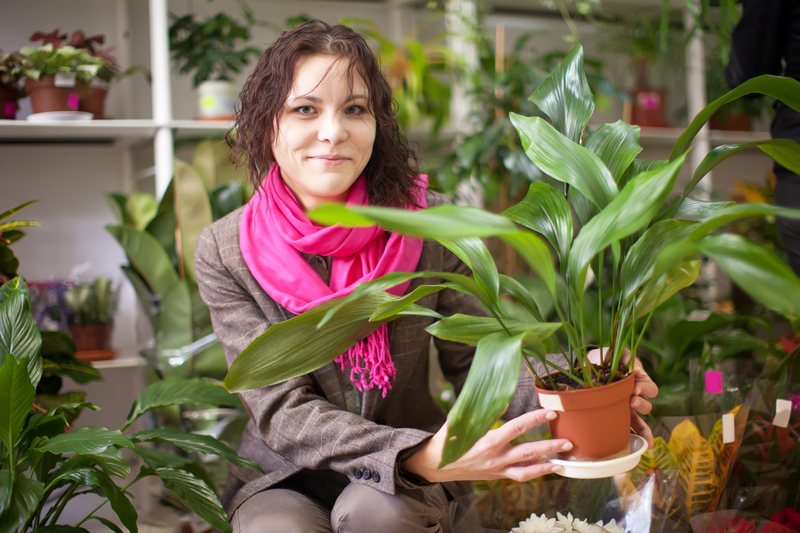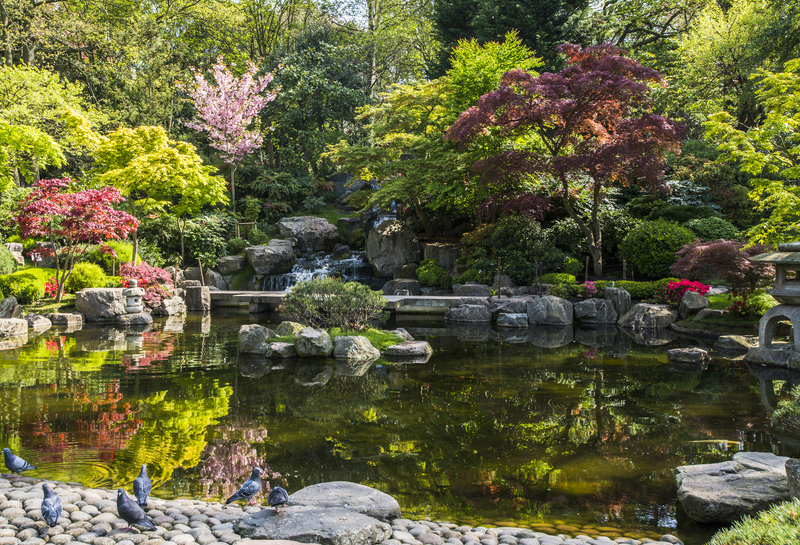Container Gardening: Cultivating Beauty in Small Spaces
Posted on 16/08/2025
Container Gardening: Cultivating Beauty in Small Spaces
Container gardening has surged in popularity as urbanization rises and outdoor spaces shrink. Whether you own a balcony, a modest patio, or only a sunny windowsill, growing plants in containers lets you create lush, vibrant gardens in even the tiniest of spots. This article will guide you through the art and science of container gardening--from selecting the right containers and soil to plant choices, maintenance, and design tips. Discover how you can cultivate beauty and life in small spaces with smart, creative practices that are accessible for both beginners and experienced green thumbs.
Why Choose Container Gardening?
Container gardening offers several unique advantages:
- Flexibility: Move containers to capture sunlight or rearrange for aesthetic change.
- Accessibility: Perfect for those with limited mobility or space.
- Soil Control: Tailor soil mixtures for different plant needs, reducing risk of disease and pests.
- Season Extension: Move tender plants indoors or to shelter as seasons shift.
- Creative Freedom: Mix and match plants, colors, and container styles for personal artistic expression.
Embracing container gardening ideas allows even apartment dwellers to savor the pleasures and rewards of cultivating greenery.

Getting Started: Selecting the Right Containers
Assessing Containers for Garden Beauty
Choosing the right planters is the first step in creating a beautiful container garden. Containers come in myriad shapes, sizes, and materials, each with unique benefits:
- Terra Cotta: Porous and classic, these clay pots let roots breathe but dry out faster; ideal for plants that dislike "wet feet."
- Plastic: Lightweight and affordable, they retain moisture well; available in a huge range of colors and styles.
- Ceramic: Often glazed with decorative finishes, they suit both indoor and outdoor settings but can be heavy and breakable.
- Metal: Modern and sleek, but can heat up quickly in sun; best for shadier spots or as decorative outer cache-pots.
- Wood: Natural look, good for larger planters; ensure wood is rot-resistant (such as cedar) and lined to extend life.
- Recycled Containers: Old buckets, drawers, even boots can be upcycled--just add drainage holes!
The Importance of Drainage
Regardless of the style you choose for your container plants, it is essential to ensure they drain well. Always check for drainage holes--root rot is a common container issue that can easily be prevented with proper drainage.
Soil Mixes: The Foundation of Healthy Container Gardens
Potting Mix vs Garden Soil
When gardening in containers, never use plain garden soil. Instead, opt for a quality potting mix designed for container use. Potting mixes offer:
- Lightweight texture for root growth and drainage
- Added nutrients suitable for a wide range of plants
- Better disease and pest resistance
You can customize your mix for specific plant types--for example, add extra sand or perlite for succulents, or moisture-retaining crystals for thirsty annuals.
Choosing Plants for Your Container Garden
Ornamentals: Flower Power and Foliage Flair
Container flower gardening is perfect for bursts of color. For radiant beauty, consider combining these popular choices:
- Annuals: Petunias, marigolds, nasturtiums, and geraniums flower boldly for months and thrive in containers.
- Perennials: Heuchera, lavender, sedum, and daylilies add longevity and reliability.
- Bulbs: Daffodils, tulips, and crocus provide spectacular spring displays in pots.
- Grasses and Ferns: Add texture and movement to your design.
- Trailing Plants: Creeping Jenny, lobelia, and ivy spill beautifully over pot edges for a lush, abundant look.
Edible Container Gardening
Beyond beauty, edible container gardening lets you harvest homegrown produce on your doorstep. Try:
- Herbs: Basil, mint, parsley, and thyme flourish in small pots on sunny windowsills or patios.
- Salad Greens: Lettuces, arugula, and spinach are compact, fast-growing, and can be cut continuously.
- Chillies and Peppers: Productive and often colorful, these thrive in the heat of a protected patio.
- Tomatoes: Choose cherry or dwarf bush varieties suited to containers with support stakes or cages.
- Strawberries: Trailing and perfect for hanging baskets, giving sweet fruit with little space required.
Thriller, Filler, Spiller Method
For dynamic, designer-style containers, use the classic "thriller, filler, spiller" combination:
- Thriller: The statement plant (like an ornamental grass or tall flower) offering height and drama.
- Filler: Bushier plants (like begonias or coleus) that provide mass and color.
- Spiller: Cascading varieties that drape attractively over container edges.
This technique ensures a balanced, professional look in any container garden arrangement.
Design Tips: Maximizing Small Space Beauty
Creative Container Garden Ideas
With the versatility of container gardening designs, you can express your creativity in many ways:
- Vertical Arrangements: Use trellises, wall-mounted pots, or stackable planters to grow upwards and save ground space.
- Themed Plantings: Mediterranean (herbs and lavender), tropical (palms and ferns), or pollinator gardens (bee/butterfly-friendly flowers).
- Color Coordination: Match blooms and foliage to your home's decor or create monochromatic "color block" displays.
- Grouped Containers: Cluster pots at different heights for visual interest and to highlight a variety of plant shapes and colors.
- Statement Pieces: Use a single dramatic container as a focal point, perhaps with a sculptural plant like an agave or topiary.
Maintaining Your Container Garden
Watering
Plants in containers will usually dry out faster than those in the ground. To keep your container garden thriving:
- Check soil moisture daily, especially in hot weather.
- Water early in the morning or late afternoon to reduce evaporation.
- Ensure containers can drain excess water, but don't let them dry out completely.
- Consider self-watering pots or drip irrigation systems for low-maintenance care.
Feeding and Fertilizing
Because frequent watering leaches nutrients, supplement your potted plants with fertilizer:
- Use slow-release granules mixed into the soil at planting time.
- Apply liquid feed weekly to encourage strong growth and blooms.
- Choose specialty fertilizers for certain plants (e.g., tomato feed for fruiting plants, acidic types for ericaceous species).
Pruning, Deadheading, and General Care
- Deadhead spent flowers regularly to encourage new blooms.
- Trim back leggy growth to maintain shape and health.
- Watch for pests--aphids, slugs, and spider mites are common container foes--remove by hand or use organic spray.
Common Problems and Solutions in Container Gardening
Even the best container gardening setups can encounter challenges. Here's how to tackle some frequent issues:
- Yellowing Leaves: Often a sign of overwatering or nutrient deficiency. Ensure drainage and feed regularly.
- Wilting Plants: Could indicate under-watering or root-bound plants. Check soil moisture and repot if necessary.
- Stunted Growth: May result from exhausted soil or overcrowding. Refresh potting mix yearly and don't overpack containers.
- Pest Infestations: Remove pests physically or apply safe, appropriate treatments swiftly to prevent damage.
Container Gardening Across the Seasons
Year-round container gardening is possible with thoughtful plant selection and seasonal adjustments:
- Spring: Plant annuals, bulbs, and cool-season vegetables. Refresh old soil and fertilize.
- Summer: Focus on heat-tolerant, drought-resistant varieties; mulch the surface to retain moisture.
- Autumn: Transition to fall-blooming plants like asters, ornamental kale, and pansies for color as temperatures drop.
- Winter: In milder climates, hardy evergreens or winter-flowering pansies provide beauty. Move tender containers indoors or insulate them if frost is a risk.
Environmental Benefits of Container Gardening
Beyond aesthetics, small space container gardens offer valuable environmental advantages:
- Enhance urban biodiversity by providing habitats for birds, bees, and butterflies.
- Improve air quality--plants absorb carbon dioxide and pollutants, even on a balcony.
- Reduce urban heat by shading surfaces and releasing cooling moisture through transpiration.
- Encourage local food production, reducing the need for store-bought herbs and veggies.
Container Gardening FAQs
What size container do I need?
Choose a container large enough for the plant's mature size--herbs and small flowers are happy in 6-8 inch pots, while tomatoes and larger perennials require 12-18 inches in depth and width for best growth.
How do I know when to water?
Stick your finger into the potting mix up to the first knuckle. If it feels dry, it's time to water. In hot weather, check daily.
Can I reuse potting soil?
It's best to refresh potting mix each season or at least mix in fresh compost and fertilizer. Avoid reusing soil from diseased plants.

Final Tips for Successful Container Gardening in Small Spaces
- Experiment fearlessly: Container gardening is forgiving and allows easy updates or changes.
- Don't overcrowd: Plants need air circulation and space to thrive; avoid stuffing too many stems into a single pot.
- Combine textures and heights: Mix spiky, leafy, blousy, and cascading forms for the most interesting container displays.
- Maintain regular care: Even low-maintenance pots need consistent watering and feeding, especially in summer.
- Keep notes: Record what grows well, which combinations you love, and any lessons for next season.
Conclusion: Transform Your Small Space with Container Gardening
Container gardening for small spaces is more than just a practical solution--it's an invitation to creativity, sustainability, and beauty. Every nook, ledge, or doorstep can bloom into a personal oasis, providing joy, tranquility, and even food. With thoughtful plant choices, good care, and a willingness to play, anyone can become a master of their own miniature garden world. So gather your pots, pick your plants, and start cultivating beauty--one container at a time!
For more container gardening tips and inspiration, explore gardening blogs, community classes, and online groups. Your small space awaits its transformation!

